Last updated: May 11, 2023
Article
Discover The Oaks: The Home of Dr. Booker T. Washington
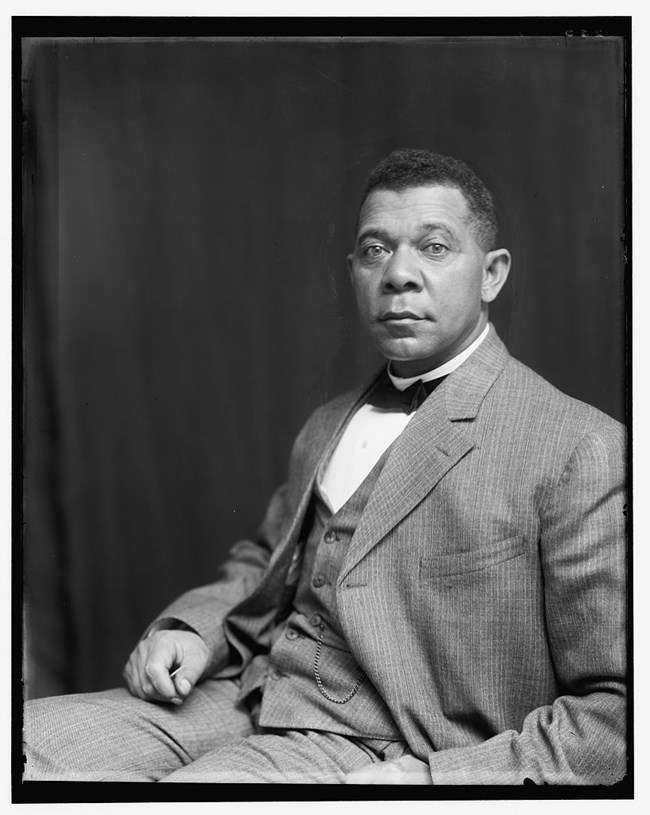
Retrieved from The Library of Congress. Johnston, F. B., photographer. (ca. 1895)
This lesson is part of the National Park Service’s Teaching with Historic Places (TwHP) program.
Introduction
Dr. Booker T. Washington was one of the most well-known orators in the United States and throughout the world during the Progressive Era. Dr. Booker Taliaferro Washington was born enslaved in 1858 or 1859 (exact date unknown) and gained his freedom via the Emancipation Proclamation. Dr. Washington went on to graduate from Hampton Institute and helped found Tuskegee Normal and Industrial Institute in 1881.
In 1899 one of the most influential and modernized homes of its time was constructed from handmade bricks and salient oak wood: “The Oaks.” The Oaks was built as the home of Dr. Booker T. Washington on the grounds of Tuskegee Institute, now known as Tuskegee University. During its construction the architect Robert R. Taylor, the first African American to graduate from M.I.T., wanted to create what one would call a “miniature Victorian themed mansion” for the first principal of Tuskegee Institute Normal and Industrial Institute to reside. Prior, Dr. Washington had lived in a modest frame home on campus. The Oaks has a total of eight bedrooms, five bathrooms, and a sauna. It is one of the major attractions on the campus of Tuskegee University.
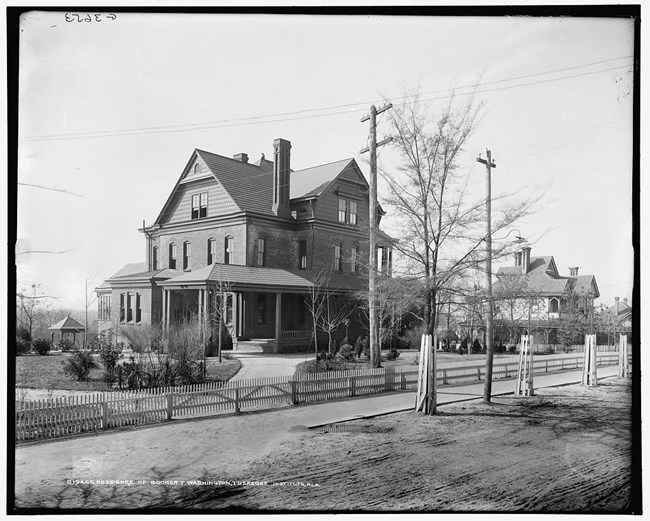
Retrieved from The Library of Congress
Lesson Contents
About This Lesson
Includes authors, learning objectives, materials for students, and details about visiting the site
Getting Started: Essential Question
Locating the Site
Map 1: Tuskegee University (formerly Tuskegee Institute)
Map 2: Drawing of the Tuskegee Institute Campus (1967)
Determining the Facts
Reading 1: “Teaching School in a Stable and a Hen-House”
Reading 2: “A Harder Task than Making Bricks without Straw”
Reading 3: “Making Their Beds before They Could Lie on Them”
Visual Evidence
Photo 1: The Oaks,” the home of Dr. Booker T. Washington
Photo 2: The President’s Room (Sauna)
Photo 3: The President’s Room (Study)
Optional Activities
Activity 1: Up From Slavery
Activity 2: Visiting The Oaks
Activity 3: The Remarkable Orator
References and Additional Resources
About This Lesson
This lesson plan, “Discover The Oaks: The Home of Dr. Booker T. Washington,” focuses on The Oaks (National Register of Historic Places), which is located at the Tuskegee Institute National Historic Site. This lesson plan was created by the Tuskegee Institute NHS Greening Youth Intern Fatimah S. Purvis. Revision assistance was provided in 2022 by Sarah (Nestor) Lane, an educator currently located in Washington state. This lesson is one in a series that brings the important stories of historic places into classrooms across the country.
Objectives
1.) Describe Dr. Booker T. Washington’s accomplishments during the Progressive Era;
2.) Describe influences of the architectural design and construction of The Oaks;
3.) Analyze Dr. Booker T. Washington’s beliefs about manual labor and education.
Materials for Students
1.) Photo of Dr. Booker T. Washington, circa 1890’s
2.) Historic photo of The Oaks, National Historic Site in Tuskegee Institute, Alabama
3.) Photo of students in a wood workshop (essential question photo)
4.) Maps 1 and 2 of Tuskegee Institute (now Tuskegee University)
5.) Reading excerpts, 1-3 (Booker T. Washington’s autobiography, Up from Slavery.)
6.) Photos 1-3 of, and from, the Oaks (home of Dr. Booker T. Washington)
About The Oaks
The Oaks is a part of the Tuskegee Institute National Historic Site. Tuskegee Institute is listed on the National Register of Historic Places. The actual physical address of The Oaks is 905 West Montgomery Rd, Tuskegee AL, 36088. This site is open to the public and there is no general admission fee. See The Tuskegee Institute National Historic Site’s NPS web page (https://www.nps.gov/tuin/index.htm ) to schedule a tour. See the Library of Congress (https://www.loc.gov/item/98500623/ ) and the National Register of Historic Places (http://npgallery.nps.gov/NRHP/AssetDetail?assetID=904fa06f-e6f0-4d64-9356-1d3e4f238bae) for additional information.
Positioning this lesson in the curriculum:
-
Time Period: 19th Century and the Progressive Era
-
Topics: This lesson can be used in history and social studies curricula to cover topics related to understanding the struggle for equal rights and the effects cultural movements can have on equal rights. Students will analyze primary source documents and images to evaluate the impact of Booker T. Washington and the role of students at Tuskegee Institute.
United States History Standards for Grades 5-12
This lesson relates to the following National Standards for History from the UCLA National Center for History in the Schools:
Era 6: The Development of the Industrial United States (1870-1900)
Standard 2B: The student understands “scientific racism,” race relations, and the struggle for equal rights
Standard 2C: The student understands how new cultural movements at different social levels affected American rights.
Era 7: The Emergence of Modern America (1890-1930)
Standard 1A: The student understands the origin of the Progressives and the coalitions they formed to deal with issues at the local and state levels.
Curriculum Standards for Social Studies
This lesson relates to the following Curriculum Standards themes for Social Studies from the National Council for the Social Studies:
Theme I: Culture
Theme II: Time, Continuity and Change
Theme III: People, Places, and Environment
Theme IV: Individual Development and Identity
Relevant Common Core Standards
This lesson relates to the following Common Core English and Language Arts Standards for History and Social Studies for middle and high school students:
Key Ideas and Details
-
CCSS.ELA-LITERACY. RH. 6-12.3
Craft and Structure
-
CCSS.ELA-LITERACY.RH. 6-12.4
Integration of Knowledge and Ideas
-
CCSS.ELA-LITERACY.RH.6-12.7
Range of Reading and Level of Text Complexity
-
CCSS.ELA-LITERACY.RH. 6-12.10
Alabama Social Studies Standards
This lesson relates to the following Alabama Social Studies Standards for alignment with teaching with state-based historical places:
United States History II: The Industrial Revolution to the Present (Eleventh grade)
Standard 1: Explain the transition of the United States from an agrarian society to an industrial nation prior to World War I.
Standard 2: Evaluate social and political origins, accomplishments, and limitations of Progressivism.
Standard 5: Evaluate the impact of social changes and the influence of key figures in the United States from World War I through the 1920s.
Getting Started: Essential Question
Do you believe African Americans needed to learn trades (ex: brick masonry, carpentry, and homemaking) to be successful during the early 1900s?
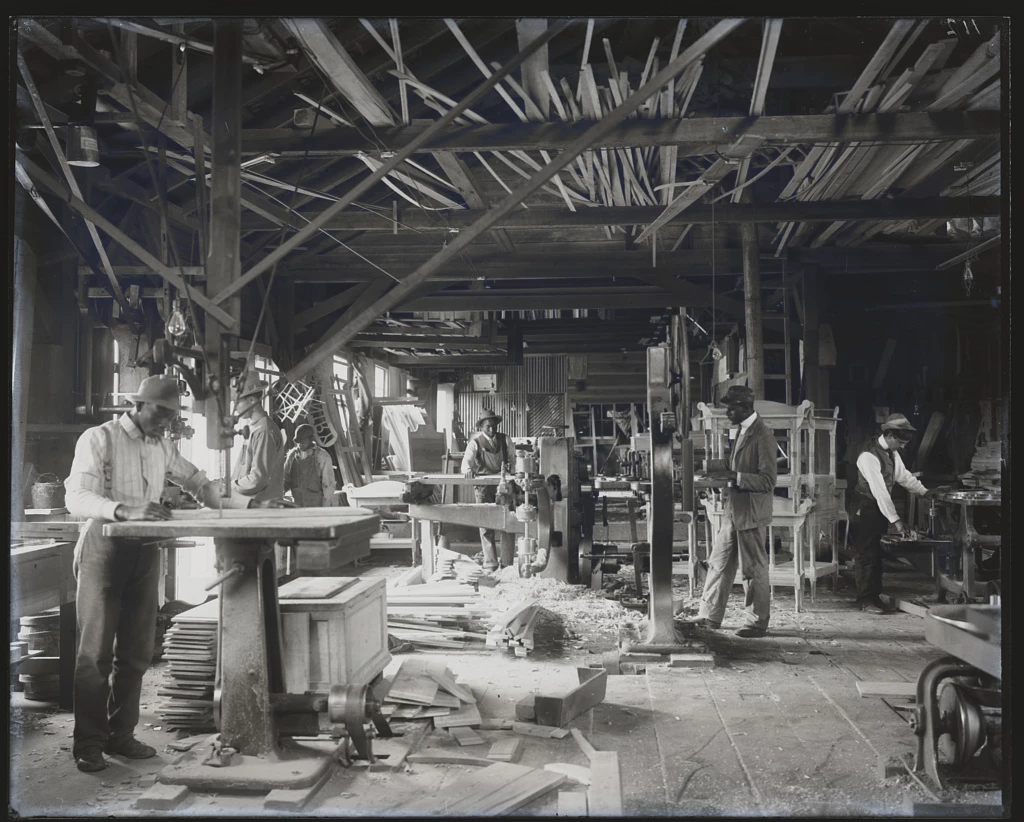
Retrieved from The Library of Congress.
Photo Analysis
-
What do you notice?
-
What events or social issues were relevant during the period that this photo was captured?
-
Why do you think women are absent from this image? What, if any, trades may have been practiced by women at this time?
-
Tuskegee Institute students engaged in work study jobs to cover the expenses for their education. Do you agree or disagree with this approach to paying for school? Why?
Locating the Site
Map 1: Tuskegee University (formerly Tuskegee Institute)

NPS
Map 2: Drawing of the Tuskegee Institute Campus (1967)
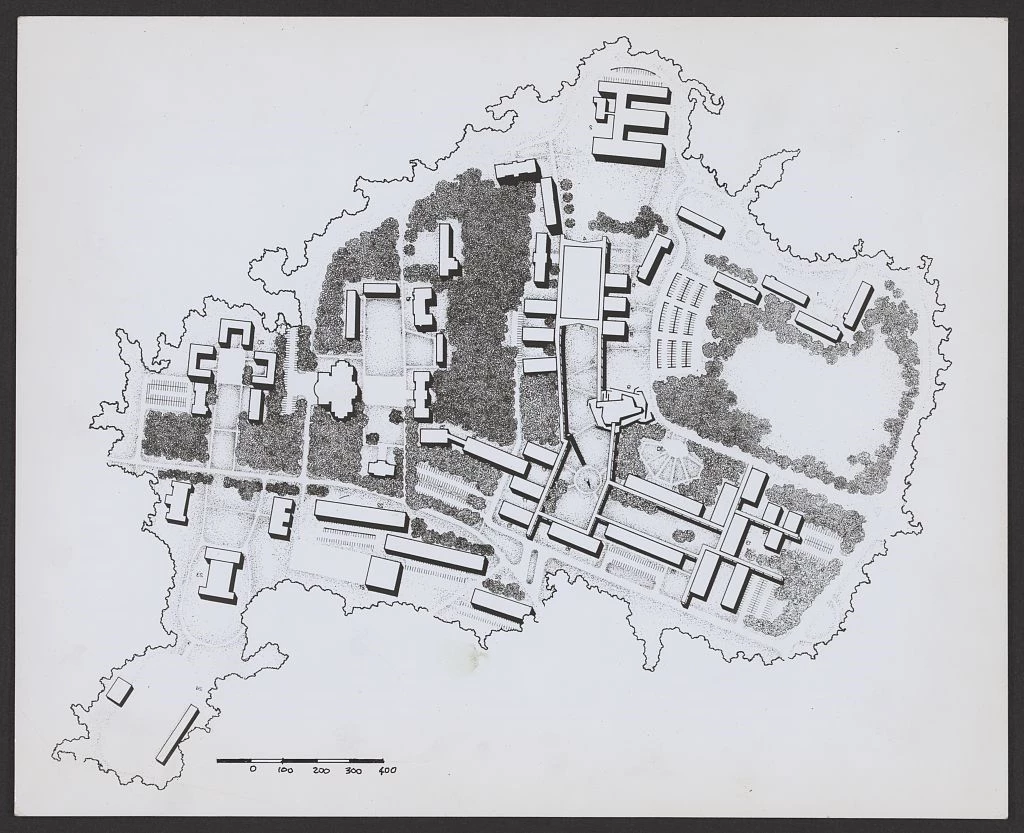
Retrieved from The Library of Congress.
Questions for Maps 1 and 2
-
What is similar and different between the map depictions of the college campus?
-
Name significant person(s) connected to the college (examples may include alumni, beneficiaries) in addition to Dr. Booker T. Washington. What are they known for?
-
Why do you think Dr. Washington’s home was given the name of “The Oaks?”
Locate it on Map 1.
-
Who was the architect of The Oaks? Who do you think built the house?
Determining the Facts
Reading 1
“Teaching School in a Stable and a Hen-House,” an excerpt from Booker T. Washington’s Up from Slavery autobiography
Miss Davidson and I began consulting as to the future of the school from the first. The students were making progress in learning books and in developing their minds; but it became apparent at once that, if we were to make any permanent impression upon those who had come to us for training, we must do something besides teach them mere books. The students had come from homes where they had had no opportunities for lessons, which would teach them how to care for their bodies.
With few exceptions, the homes in Tuskegee in which the students boarded were but little improvement upon those from which they had come. We wanted to teach the students how to bathe; how to care for their teeth and clothing. We wanted to teach them what to eat, and how to eat it properly, and how to care for their rooms. Aside from this, we wanted to give them such a practical knowledge of some one industry, together with the spirit of industry, thrift, and economy, that they would be sure of knowing how to make a living after they had left us. We wanted to teach them to study actual things instead of mere books alone.
Questions for Reading 1
1.) What events and/or social issues impacted the living conditions of African Americans during the early 1900s?
2.) Why would Dr. Booker T. Washington be concerned with students’ physical health?
3.) Do you think it is important to possess a trade and/or a degree? Do you think Dr. Booker T. Washington would agree with you? Why or why not?
4.) What are examples of trades students would learn in the early 1900s? Are these trades still relevant today?
Reading 2
“A Harder Task than Making Bricks without Straw” – an excerpt from Booker T. Washington’s Up from Slavery autobiography
Brickmaking has now become such an important industry at the school that last season our students manufactured twelve hundred thousand of first-class bricks, of a quality suitable to be sold in any market. Aside from this, scores of young men have mastered the brickmaking trade - both the making of bricks by hand and by machinery - and are now engaged in this industry in many parts of the South.
The making of these bricks taught me an important lesson in regard to the relations of the two races in the South. Many white people who had had no contact with the school, and perhaps no sympathy with it, came to us to buy bricks because they found out that ours were good bricks. They discovered that we were supplying a real want in the community. The making of these bricks caused many of the white residents of the neighbourhood to begin to feel that the education of the Negro was not making him worthless, but that in educating our students we were adding something to the wealth and comfort of the community. As the people of the neighbourhood came to us to buy bricks, we got acquainted with them; they traded with us and we with them. Our business interests became intermingled. We had something which they wanted; they had something which we wanted. This, in a large measure, helped to lay the foundation for the pleasant relations that have continued to exist between us and the white people in that section, and which now extend throughout the South.
Questions for Reading 2
-
What was being produced and why? Who does this lead you to believe was responsible for constructing many of Tuskegee Institute’s original buildings? (Some of which, still stand today.)
-
Why were students tasked with engaging in construction and brickmaking?
-
How does Dr. Washington connect brickmaking to the South’s race relations?
Reading 3: “Making Their Beds before They Could Lie on Them” – an excerpt from Booker T. Washington’s Up from Slavery autobiography
In the early days we had very few students who had been used to handling carpenter's tools, and the bedsteads made by the students then were very rough and very weak. Not unfrequently when I went into the students' rooms in the morning I would find at least two bedsteads lying about on the floor. The problem of providing mattresses was a difficult one to solve. We finally mastered this, however, by getting some cheap cloth and sewing pieces of this together so as to make large bags. These bags we filled with the pine straw - or, as it is sometimes called, pine needles - which we secured from the forests nearby. I am glad to say that the industry of mattress-making has grown steadily since then, and has been improved to such an extent that at the present time it is an important branch of the work which is taught systematically to a number of our girls, and that the mattresses that now come out of the mattress-shop at Tuskegee are about as good as those bought in the average store. For some time after the opening of the boarding department we had no chairs in the students' bedrooms or in the dining rooms. Instead of chairs we used stools which the students constructed by nailing together three pieces of rough board. As a rule, the furniture in the students' rooms during the early days of the school consisted of a bed, some stools, and sometimes a rough table made by the students. The plan of having the students make the furniture is still followed, but the number of pieces in a room has been increased, and the workmanship has so improved that little fault can be found with the articles now. One thing that I have always insisted upon at Tuskegee is that everywhere there should be absolute cleanliness. Over and over again the students were reminded in those first years - and are reminded now - that people would excuse us for our poverty, for our lack of comforts and conveniences, but that they would not excuse us for dirt.
Another thing that has been insisted upon at the school is the use of the tooth-brush. "The gospel of the tooth-brush," as General Armstrong used to call it, is a part of our creed at Tuskegee. No student is permitted to remain who does not keep and use a tooth-brush. Several times, in recent years, students have come to us who brought with them almost no other article except a tooth-brush. They had heard from the lips of older students about our insisting upon the use of this, and so, to make a good impression, they brought at least tooth-brush with them.
Questions for Reading 3
-
Reflect on the students’ process of creating their own furnishings for home and school. How would you feel in their position?
-
What is significant about the mattress descriptions? Why would he include this information in his writing?
-
What do you think a toothbrush symbolized to Dr. Washington? To the students?
Visual Evidence
Questions for Photo 1
1.) Describe the attributes of the home.
[Note: Educators and advanced students may be interested in this Preservation Brief 17: Architectural Character—Identifying the Visual Aspects of Historic Buildings as an Aid to Preserving their Character (nps.gov).]
2.) What Victorian influence do you see in the design?
3.) What do you believe was the significance of the home when first built? What is its significance now?
The President’s Room
Photo 2: Dr. Booker T. Washington’s sauna (within his bedroom)
Photo 3: Study, with original furnishings
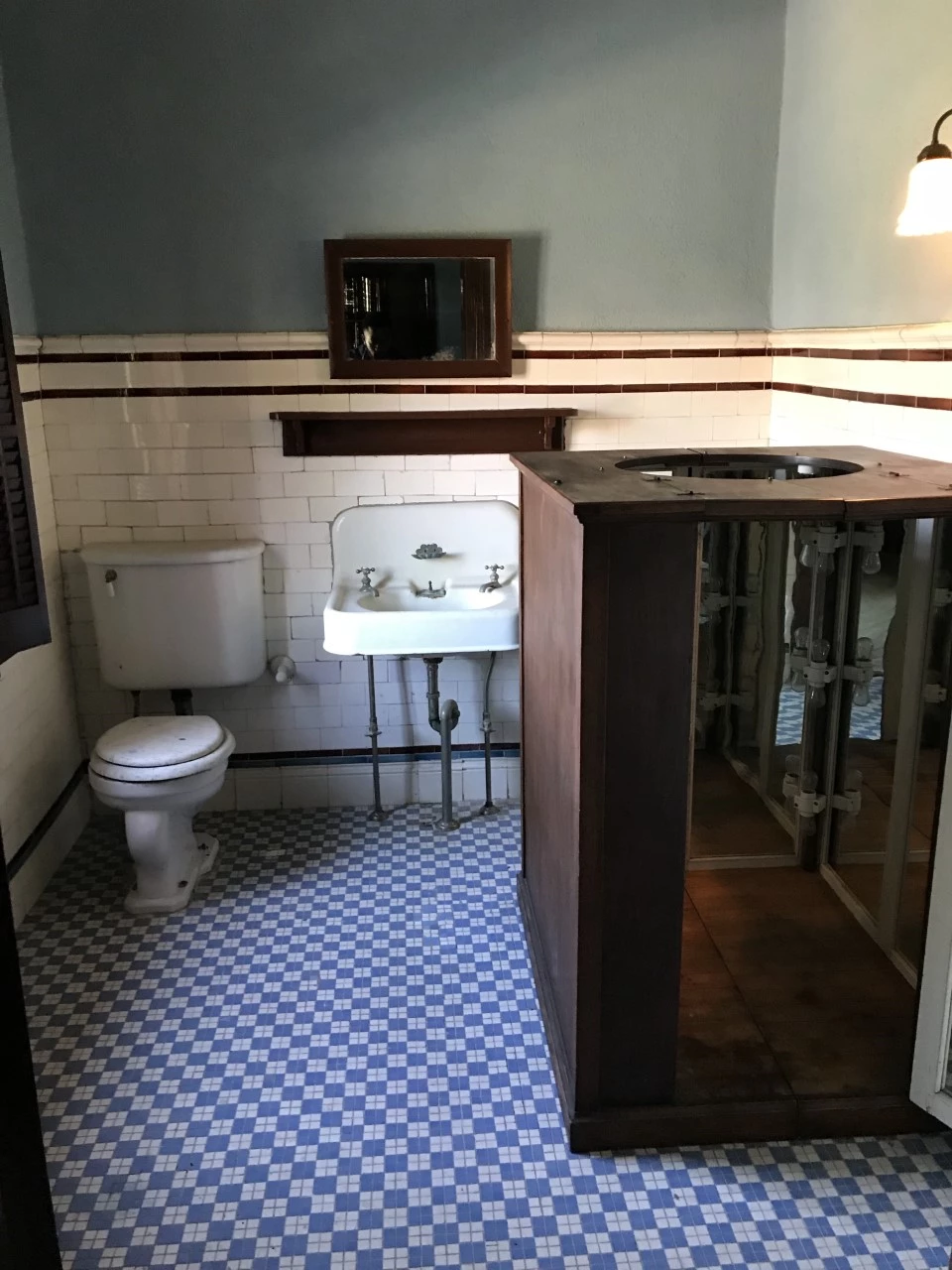
Courtesy of Sedric Wytch for the National Park Service.
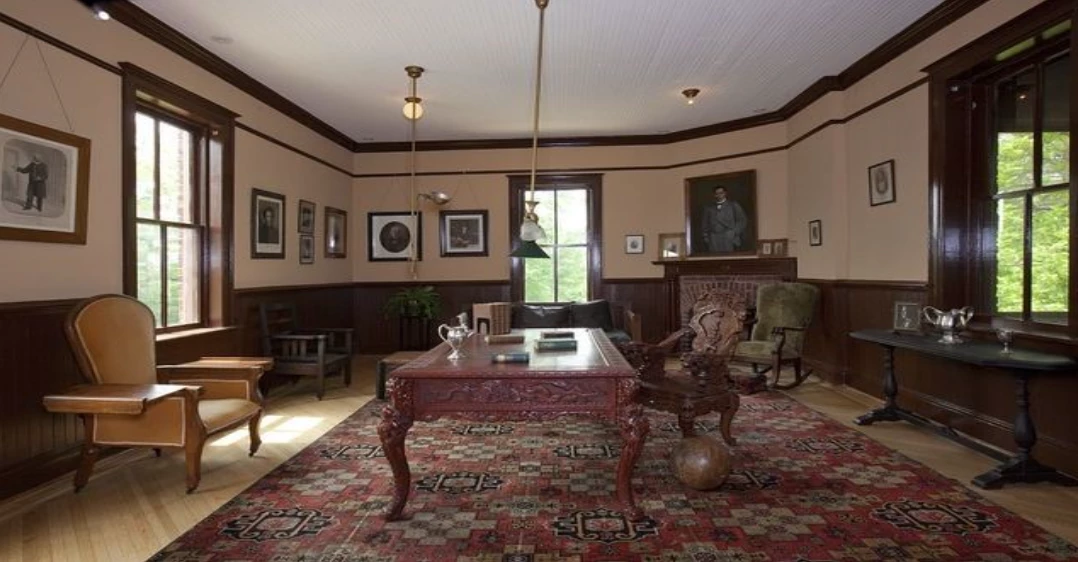
NPS Photo
Questions for Photos 2 and 3
-
The Oaks was one of the first homes in Macon County, Alabama to have indoor plumbing, and it even had five bathrooms. What do think the sophistication and modern features of the home conveyed to visitors?
-
Dr. Booker T. Washington had taken a tour of Europe and was inspired to have a sauna built into his home. Why do you think he would do this?
-
The study’s wood floors are original and were made by students, along with the nails. Based on the readings, what other components of the home do you think students were involved in constructing?
-
What would be benefits of living in The Oaks during this period? Do you think there would be drawbacks? (Prior to this home, Dr. Washington lived in a modest frame house.)
Putting it All Together
In this lesson students learned about Dr. Booker T. Washington’s background and beliefs on the role of students at Tuskegee Institute during a complicated time in history for race relations in the South. This tied to examination of The Oaks’ history and design by architect Robert R. Taylor. Use the following activities to take your students further into the history of Dr. Booker T. Washington, his reputation as an orator, and the design of The Oaks.
Optional Activity 1
Up from Slavery
Have students reconsider the essential question and how it relates to Dr. Booker T. Washington’s background and beliefs: “Do you believe African Americans needed to learn trades (ex: brick masonry, carpentry, and homemaking) to be successful during the early 1900s?)
To develop responses to this question, have students read Dr. Booker T. Washington’s autobiography Up from Slavery (or excerpts in addition to what was included in the readings) and/or additional biographical information of your choosing.
Responses to the essential question may be a digital product, such as a slideshow or video, or written, such as an extended response or essay.
Provide guidelines to include the following in their responses:
-
A summary, and/or timeline, of important events in Dr. Washington’s life
-
Biographical details about Dr. Washington that connect to, or may have developed, his beliefs and passion for students learning trades
-
Whether they agree or disagree, and why, with Dr. Washington’s opinions on manual labor
-
Student-designed illustration(s) of event(s) from Up from Slavery with captions that describe connections to the essential question
Students may work in groups to develop their responses and present to the class.
Optional Activity 2
Visiting The Oaks
Dr. Booker T. Washington lived in a large home complete with eight large bedrooms, five bathrooms, a sauna, and a “stair step closet.” Students built the home in 1899 under the guidance of architect Robert R. Taylor. The students harvested the wood and made the bricks and nails. Students worked to learn a trade to pay their tuition.
Consider and/or research: Are there programs today that are geared towards students working in school to pay for their education? Are they similar or different to Dr. Washington’s?
Students can visit The Tuskegee Institute National Historic site where they will be able to tour the home. (Virtual tours and/or video can be substituted as needed due to location.) While there, students should consider the following (teachers can ask these during the visit or provide as a post-reflection activity).
-
Why aren’t portraits nailed into the wall? What material is the wall made of?
-
Who was the architect responsible for overseeing the home’s construction? What else was significant about his career?
-
What is a parlor? What social function did it serve in the home?
-
Why were the “work study” students and servants not allowed to enter the home through the front door? Do you agree with the reasoning?
-
How many levels (stories) does The Oaks have? Is this significant? Why or why not?
Optional Activity 3
The Remarkable Orator
Dr. Booker T. Washington was a famous orator. He traveled around the United States delivering addresses on race relations in the U.S. and education. His most famous address was his 1895 Atlanta Exposition Address.
-
Have students consider perspectives Dr. Booker T. Washington may have had as an orator by answering these questions:
-
Based on the readings and artifacts you have considered so far, what topics do you think he may have included in his speeches, and why?
-
How does the role of the people in the audience influence what is shared?
-
If you were in Dr. Washington’s shoes, what would you say to the crowd about the progress made in race relations and education?
-
Do you think they would agree with your message?
-
Have students read a transcript of the 1895 Atlanta Exposition Address.
-
Support students in connecting the speech to historical contexts. Have students compare the actual transcript to their perspective-taking ideas.
Support students’ continued reflection:
-
What surprises you about the transcript?
-
What ideas had you predicted in your perspective-taking?
-
Why do you think Dr. Washington worked to raise money for the school?
-
Do you think Dr. Booker T. Washington would be proud of Tuskegee University today? Why or why not?
References and Additional Resources
Detroit Publishing Co. “Residence of Booker T. Washington, Tuskegee Institute, Ala.” The Library of Congress, Library of Congress, 1906, www.loc.gov/item/det1994012062/PP/.
Johnston, Frances Benjamin. “[Booker T. Washington, Half-Length Portrait, Seated].” The Library of Congress, Library of Congress, 1895, www.loc.gov/item/2010645746/.
Johnston, Frances Benjamin. “[Wood Workshop at Tuskegee Institute, Ca. 1902].” The Library of Congress, Library of Congress, 1902, www.loc.gov/item/2014647902/.
Randolph, Paul. “[Tuskegee Institute, Tuskegee, Alabama. Campus Master Plan].” The Library of Congress, Library of Congress, 1967, www.loc.gov/item/2010648315/.
“Making Bricks without Straw.” Up From Slavery, by Booker T Washington, Dover Publications, 1995, pp. 74-74.
“Making Their Beds before They Could Lie on Them.” Up from Slavery, by Booker T. Washington, Dover Publications, 1995, pp. 82–83.
“Maps.” National Parks Service, U.S. Department of the Interior, 7 Mar. 2016, www.nps.gov/tuin/planyourvisit/maps.htm.
McMillian, Angela. Booker T. Washington: A Resource Guide, Library of Congress, 2019, https://guides.loc.gov/booker-t-washington/introduction.
“Teaching School in a Stable and a Hen-House.” Up From Slavery, by Booker T Washington, Dover Publications, 1995, pp. 61–61.
“Tuskegee Institute National Historic Site (U.S. National Park Service).” National Parks Service, U.S. Department of the Interior, 11 July 2016, www.nps.gov/tuin/index.htm.
“[The Oaks, Home Built for Booker T. Washington and His Family in Tuskegee, Alabama.]” The Library of Congress, Library of Congress, 2009, https://www.loc.gov/item/2010640057/
